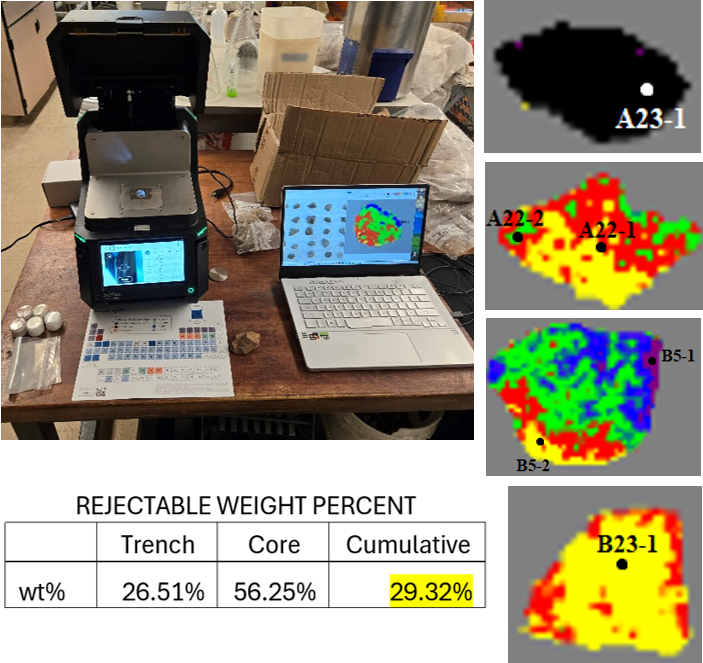
CMI researchers from Colorado School of Mines conducted the activity for this highlight
Innovation
Implementation of new x-ray fluorescence (XRF) technology to verify ore sortability.
Achievement
SciAps’ state-of-the-art 80kV Powerhouse XRF enabled point analysis of specimens scanned for sortation. Results indicate that XRT sortation is ~90% accurate & may enable rejection of 25% ±5% of the deposit’s weight before crushing.
Significance and Impact
- XRT sortation technology seems to be effective at classifying rare earth ore.
- Savings in water & energy usage are directly proportional to the deposit’s “rejectable” weight percent.
Hub Target Addressed
Developing processes to recover and separate REEs from traditional or unconventional sources.
